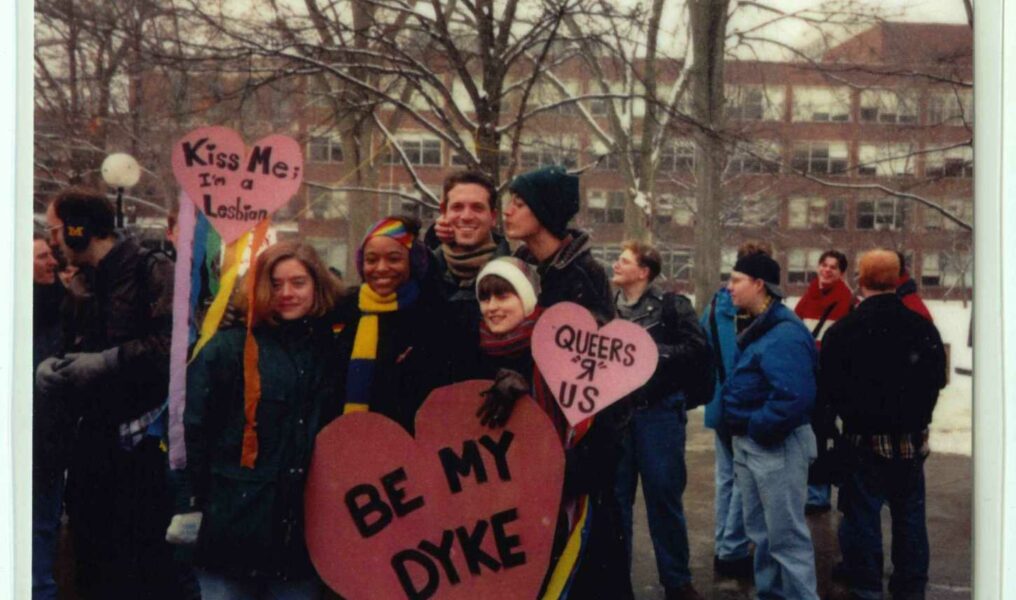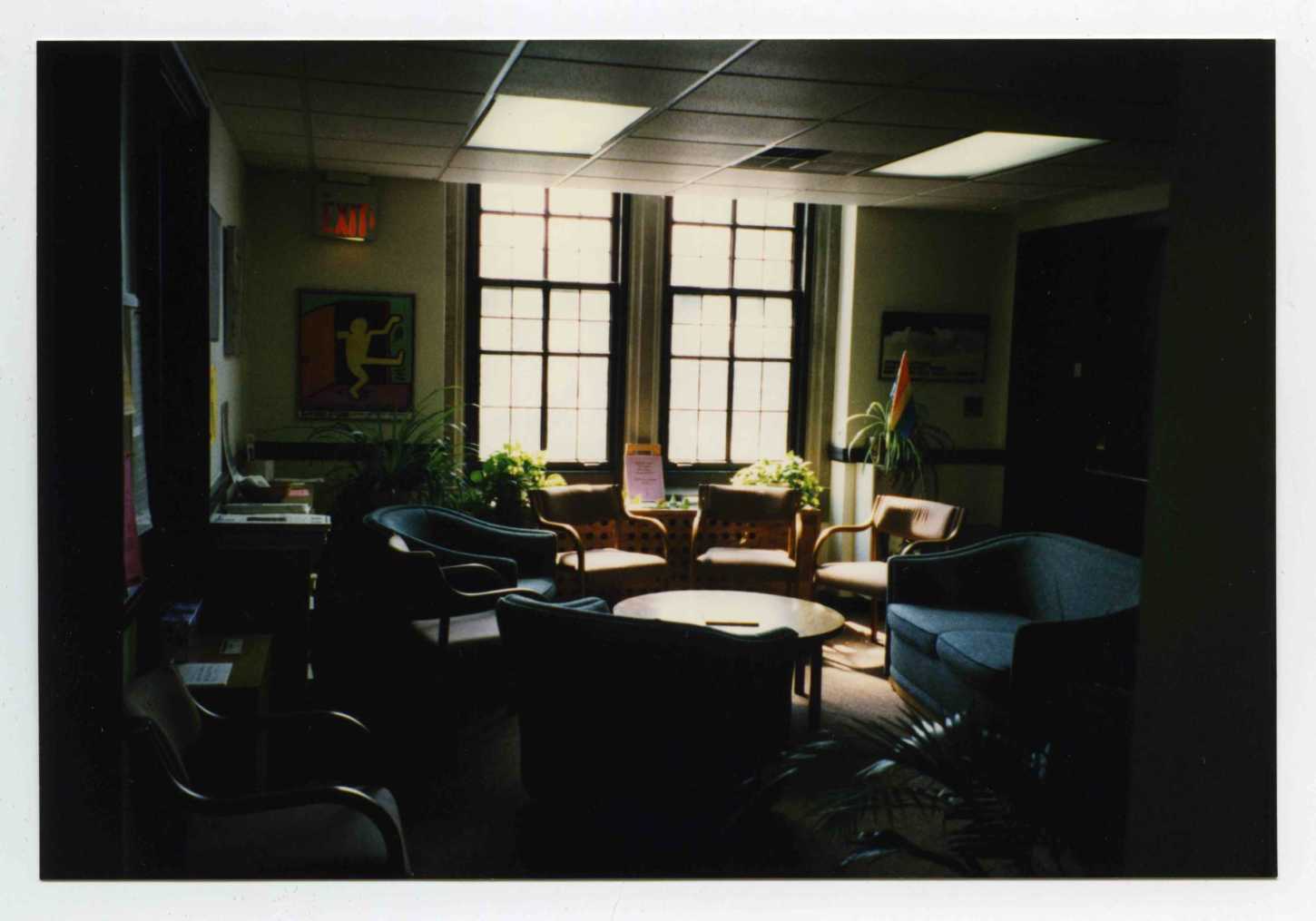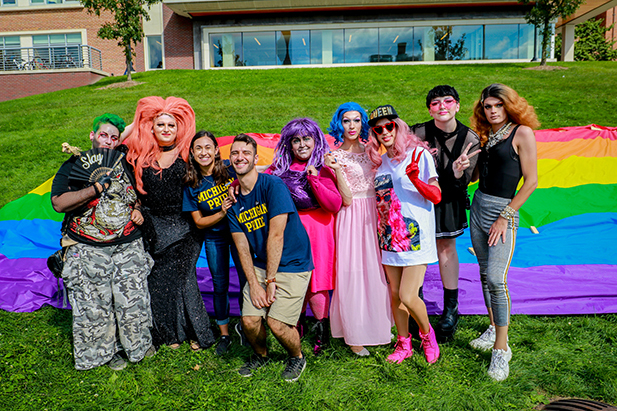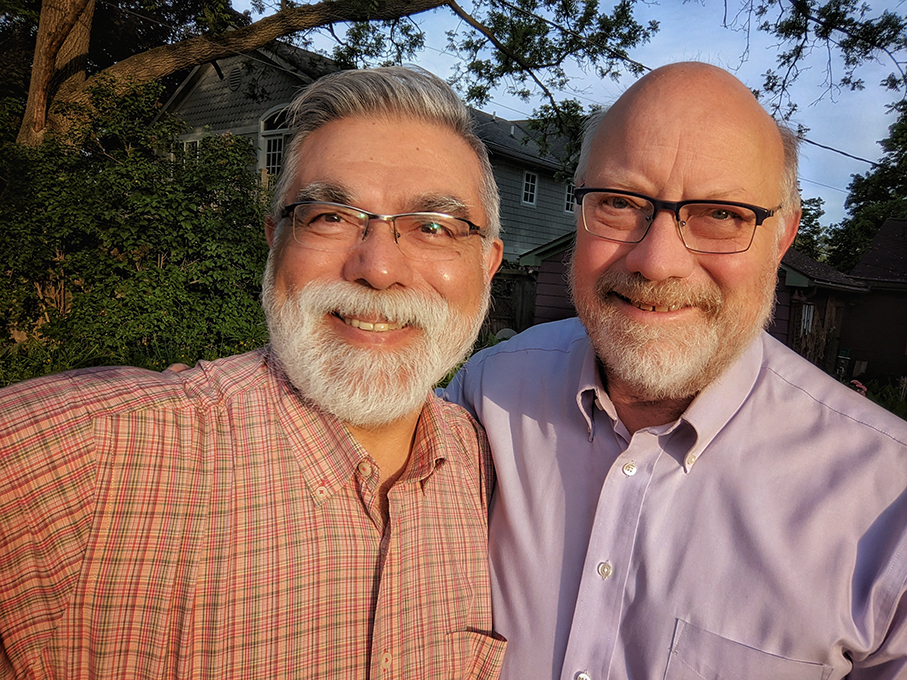UM's Spectrum Center 50 Years Later: Some LGBTQ+ Students Never Stepped Inside. It Still Changed Their Lives.
Now in a new suite, the Spectrum Center reflects on its past to guide its future

As a first-year student at the University of Michigan (UM) in the late '70s, Martin Contreras struggled with his attraction to men.
“Didn't have a name for it,” Contreras told Pride Source. Contreras and his husband Keith Orr are former co-owners of Aut Bar in Ann Arbor. “Sexual orientation was not in my vocabulary at the time.” But after he heard legendary LGBTQ+ activist Jim Toy speak on one occasion, Contreras was inspired to take the first steps on what would become a five-year coming out journey.
One of those early steps was a visit to the Human Sexuality Office (HSO), UM’s LGBTQ+ student union that would later become the Spectrum Center.
“I remember that his words were very moving,” Contreras said. “And it felt like maybe this is where I should be going to get more information to figure out what's going on with me. And so I did find myself locating the Human Sexuality Office, which sounds very clinical and makes it sound like something is wrong.”
That office was established in September 1971 following pressure by UM students and the Gay Liberation Front (GLF). The late '60s and early '70s were a time when student activists were inspired by the emerging queer and trans movement. The university provided a small budget for two quarter-time HSO advocates, Cindy Gair of the Radical Lesbians and Toy. Previously, when asked by the UM Regents what the UM chapter of the GLF hoped to achieve, Toy famously declared, “We want justice!”
Thus, the HSO became the first staff office for LGBTQ+ students in an institution of higher learning in the country. Notably, that’s still not the norm. A Sage Journals survey conducted in 2020 reveals that only 62 percent of 1,953 four-year, not-for-profit colleges and universities in the U.S. have officially recognized LGBTQ+ student groups, and far fewer have at least one paid staff member or graduate assistant.
“I think some of the pieces that I really connect to about our beginning is that we were an effort that was a collaboration between people on and off campus,” said Will Sherry, director of the Spectrum Center for the past 14 years. “Something that we still take very seriously [is] making sure that our programs and the things that we offer are accessible beyond the institution, whenever possible.” For example, Sherry said, Toy was a prominent figure involved with establishing an Ann Arbor chapter of the national GLF organization.
Orr made a similar observation.
“Even though it is headquartered in the university, they have a reach beyond the university," he said. "[What] I've always been impressed with [is] that they recognize that part of gay life for [UM] students also means gay life in Ann Arbor."
One of the things that made an impression on Sherry is that both Toy and Gair co-led the office from the beginning.
“That history of inclusion across multiple identities and what it means to have not a single, male leader, but really to have equity in that leadership just speaks to the values of the way in which we try to operate our Center,” Sherry said. “[We are] really critical in making sure that the types of values that Jim and Cindy and others instilled in the Center continue to live on in the way we do our work.”
Perhaps one of the most significant early victories was Toy’s successful fight to amend the bylaws of the university to include “sexual orientation” as a category protected from discrimination in employment, educational programs and activities, and admissions. The Regents voted 8-1 to change the bylaws in 1993.
Now celebrating 50 years, the Spectrum Center continues to be a leader in developing student services and programs through an intersectional lens. Part of the anniversary festivities in late 2021 included the now-famous Pride-themed homecoming halftime show, dedicated to the Center’s big anniversary. A pink tie gala and a celebration of Toy’s life were held last month.
Pride Source spoke with Kerene Moore, one of the panelists at the gala. Moore attended UM for both undergrad and law school and became involved in the Spectrum Center after graduation as a practicing attorney in the community who was doing LGBTQ+ rights work. For the past several years, she has worked with the Center on initiatives like presentations about legal name changes and training sessions.

“They've given me an honorary Lavender Degree for my work in the community,” Moore said. “So they're just always partners. It's always great to go to their events and be available for students who have legal questions or just show up and bring other LGBTQ community members together.”
“Often we get youth and their parents who are just coming to learn, and it helps so much for them to see that it gets better,” she continued. “That here's a critical mass of people who are LGBTQ who have figured out a way to learn and live and love and be welcome. And I think that's really important for people to see, and it's one of the things I love about the Spectrum Center: They're always up for bringing people together, which we don't do enough.”
Included in their community-driven mission is Lavender Graduation, a ceremony celebrating LGBTQ+ students held separately from the university’s academic graduations. It was founded by director Ronnie Sanlo in the '90s. By that time, the office’s name had expanded to the UM Office of Lesbian Gay Bisexual & Transgender Affairs.
“Every year, they do that lavender graduation, and they bring together community members, and the students are always just so happy and carefree and ready to move forward,” Moore said. “They've been given enough support that they're happy and ready to take on the world. And for me, it wasn't like that. For me, even though I went to the University of Michigan, I really wasn't connected to any community in undergrad and law school. I didn't even go to my undergrad graduation.”
Moore said had she known about the Center as a student, it would have benefited her.
Sherry called Lavender Graduation one of his favorite times of year. "Watching students be able to celebrate themselves and one another within the community in a way that sort of recognizes that there were likely challenges and hurdles that they may have faced and that what they've accomplished is not in
spite of
who they are, but really
because of
the sort of amazingness that is the queer community and is who they are," he said.

Parker Kehrig and Xochi Sanchez are part of the new queer generation doing the work of the Center. They are LGBTQ+ Oral History Project student leads for an oral history project launched by the Spectrum Center in 2019.
Kehrig described hir interest in oral history from the time ze was “a young gay baby” in high school, and naturally turned to historicizing to gain a better understanding of hir world. At the time, ze felt there wasn’t much information available about queerness, including “what queer people's lives are like.” Kehrig said ze didn’t personally know any older queer people, either. “It didn't feel like there was any blueprint for me, so I really turned to the active historicizing to find those blueprints,” ze said.
Both students felt drawn to seek out the lesser-known voices and the stories that haven’t been told.
“Something that we noticed there was a gap in, as we were doing our research for the project and also just conducting the project, was that there just wasn't as much about regular people's experiences who didn't have a couple of lines in fancy queer history journals and seeing what their lives were like and what their experiences were like,” Kehrig said.
“When it comes to this oral history project, I felt like there are a lot of voices that we don't know how long they're going to be here, whether that's in this specific space or in this life,” Sanchez said. “And it's just very important for me to preserve those stories, especially stories of queer people of color and/or undocumented queer people who are at an even greater chance than a white cis queer person [of being] erased.”
In the course of their work, Kehrig and Sanchez found some surprises.
“There was an old photograph of Jim Toy on a wooden placard that clearly had been taken in 1970-something,” Sanchez said. “And there were photographs of people who were either part of or were attending a Center event, in either I think either the late '90s or the 2000s; I think it was a dance.”
Kehrig said that as a young student in Ann Arbor, there were things about UM’s queer history that ze hadn’t known before. Ze spoke of a time before the Center was established that Jim Toy wanted to hold a statewide conference for the GLF, but the university turned him down. It was only because a closeted university official gave Toy a key to the Student Activities Building that the conference was able to happen.
“There is a very rich history of opposition to the university in really beautiful ways that I feel like the University of Michigan really liked to quietly perhaps nod at, which is not a real acknowledgement, but also sort of kept under wraps,” Kehrig said. “And that dissonance is really interesting to me.”
The students talked about what they’d like to see for the Center in the next 50 years. They would both like to see more people of color. Kehrig said ze would like it to be in a space that feels less transient. For a planned renovation, the office had been boxed up and moved elsewhere. Only recently are they back on the third floor of the Michigan Union.
“For me, that was something that made the oral history project feel even more necessary and dear to me: that no matter what they do, we're going to be continuing to record the histories and be honest about people's lived experiences within these spaces, and be honest about criticism of the university,” Kehrig said.
“And I hope that in the next 50 years, that that continues to thrive and that the office that we have in the union becomes so obscenely queer and so just ridiculously flamboyant that they would have to demolish our office for no one to tell that we were there,” ze added. “That's what I would like to see.”

Contreras and Orr may not have frequented the center, but as young gay students in the late '70s and early '80s, their interactions with the HSO made an impression. Contreras remembers dialing the HSO hotline.
“It rang into some volunteer’s home. I made use of it a number of times. And you know this was long before cell phones, so I was always having to wait till my roommates in the dorm were not in the room so I could pick up the phone," Contreras said, laughing.
Both Contreras and Orr mentioned that the path to the HSO was not a “straight” one.
“To get to the Human Sexuality Office — it was not well marked, shall we say?” Orr said. “And you are sort of going through a labyrinth of all of these different student offices.” Contreras called it a labyrinth as well.
Since the renovation, Sherry said not only are they back on the third floor of the Michigan Union but also in a brand new suite.
“And it’s a beautiful location,” he was quick to add.
In his 14 years with the Center, Sherry said he’s had the privilege of hearing from so many people, alumni in particular, on how the Spectrum Center changed their lives.
“For some people, that change happened because they were really involved in the Center. They maybe knew Jim Toy; they answered crisis lines next to him. They were active in that way. And then, for some people, it really is just the stories of walking by the door and never going in, but knowing that it was there.”









